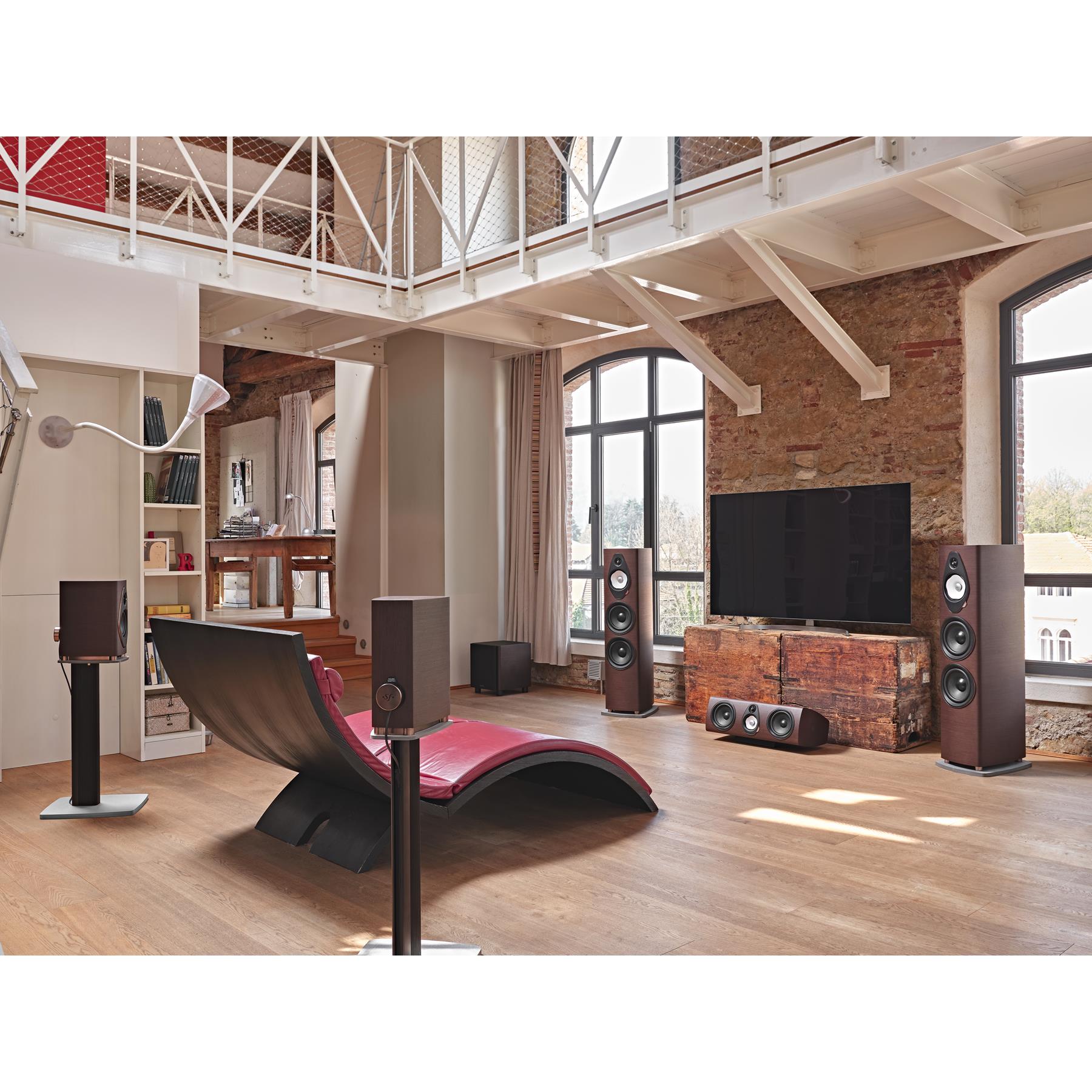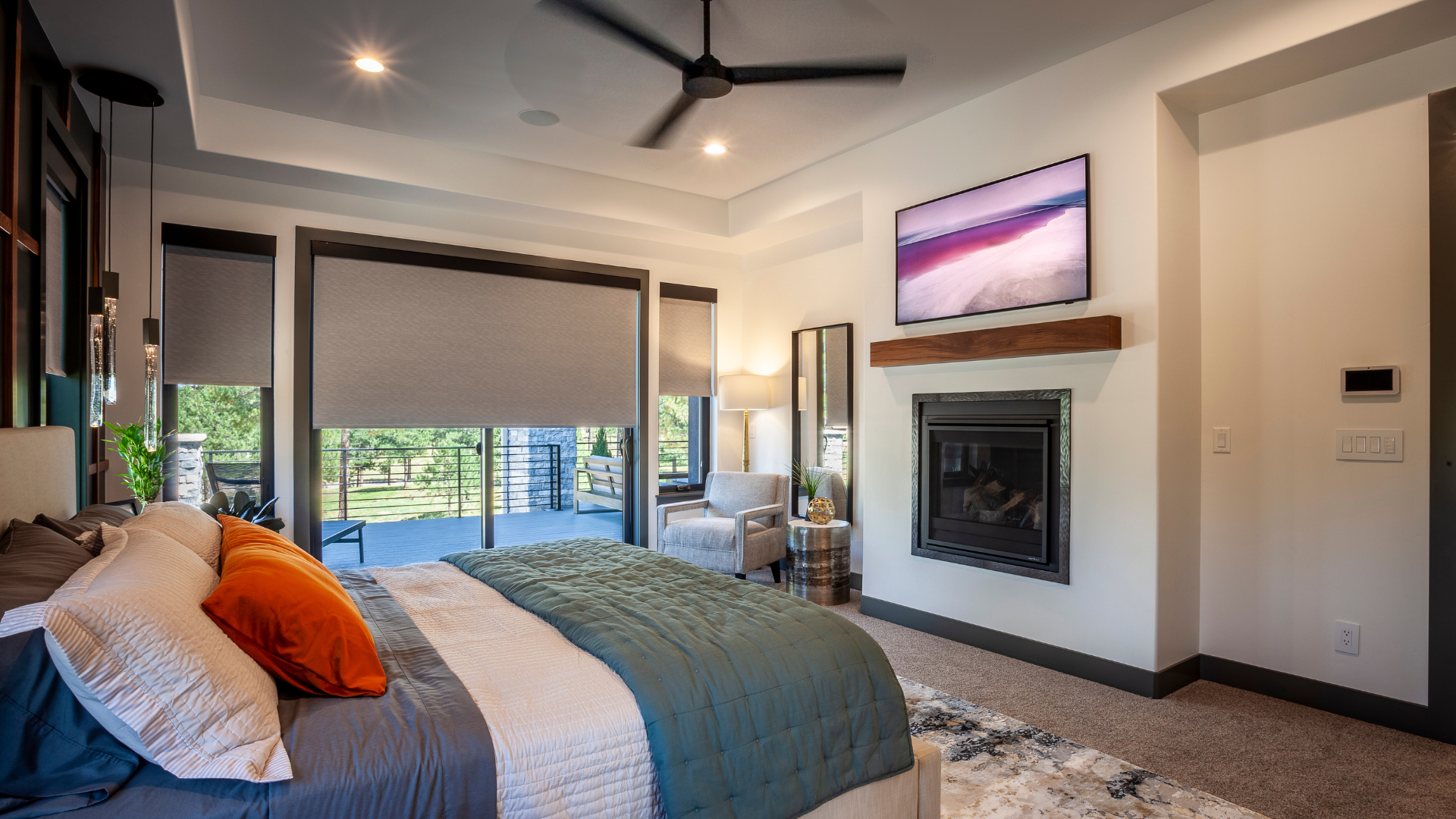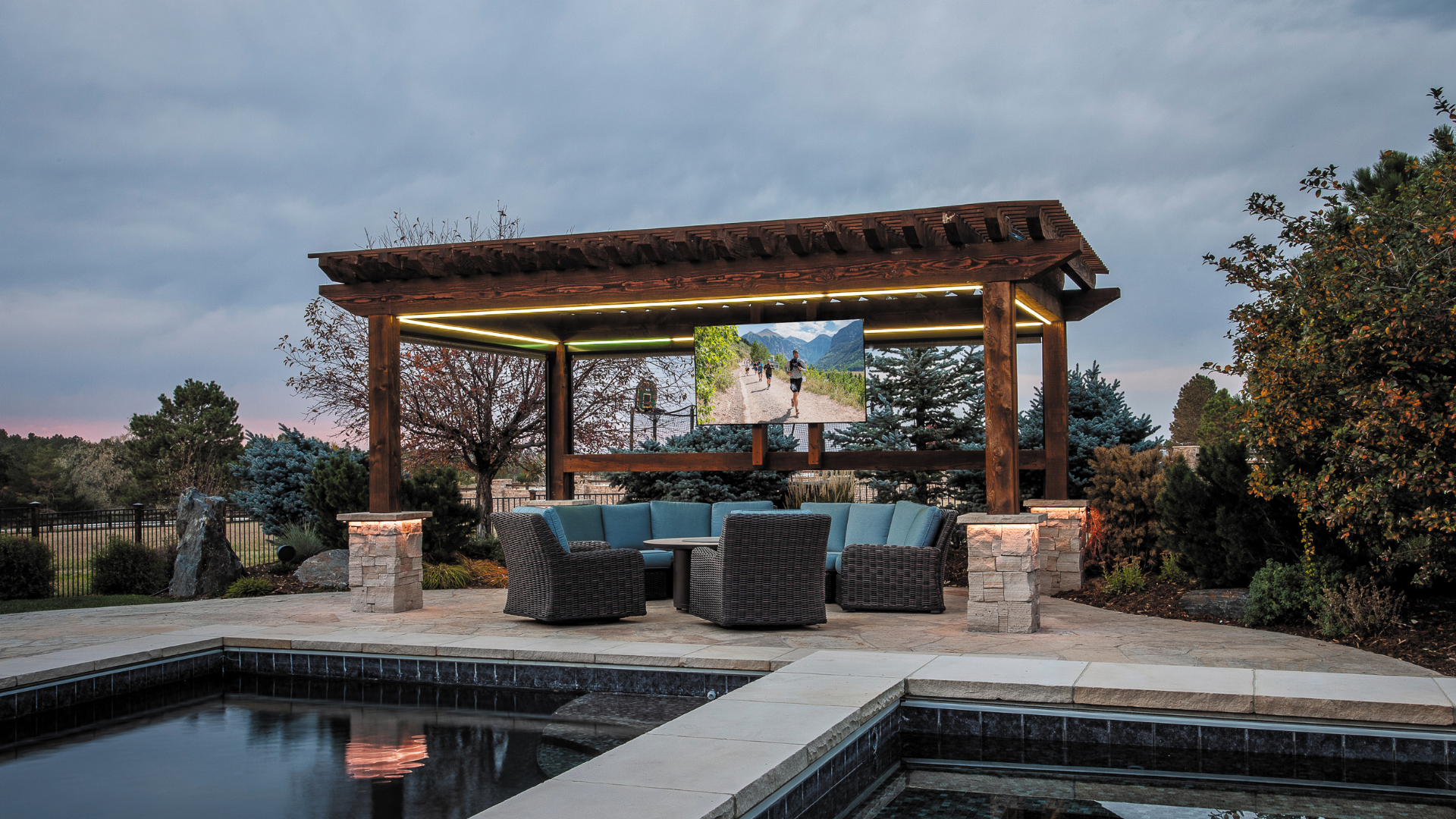Looking for a new television? The process can seem a little overwhelming, but here is some helpful information to help you narrow down the choices. And, of course, if you live in Colorado or New Mexico, we highly recommend coming into the ListenUp nearest you and talking to one of our knowledgeable sales consultants.
If you haven’t bought a TV for a while you might be asking yourself this question, but the fact is that for screen sizes over 32-inches, manufacturers are mostly making 4K sets. The prices of 4K (aka “Ultra HD”) TVs have fallen dramatically in the past few years, and given the advantages of 4K over HD, 4K TVs are clearly recommended. 1080P HDTVs display about two million pixels, which provides wonderful detail, but 4K TVs increase the number of pixels to 8 million, which makes for deeper blacks, more vibrant color and stunning sharpness.
8K is, not surprisingly, a higher resolution than 4K. 1080p HD screens have a resolution of 1,920 by 1,080 pixels, while 4K doubles those numbers to 3,840 by 2,160 and quadruples the number of pixels. 8K doubles the numbers again, to a resolution of 7,680 by 4,320. That's four times the number of pixels as 4K, which means it's 16 times that of a 1080p HDTV. So 8K is the current gold standard, and we’ll discuss it more in the section on recommended TVs.
In general, the bigger the better — very few people complain that their TV is too big. That being said, there are, of course, some constraints, which mainly have to do with room size and viewing distance. With HDTV, the rule of thumb is that your viewing distance should be roughly 1.5 times your screen size. Any closer, and the image starts to degrade and you can see the pixel structure. With the higher resolution of today’s 4K sets, however, you can get away with a 1:1 ratio between your screen size and viewing distance. Here's a handy chart which shows how you can sit significantly closer to a 4K than an HD model:
TV screen size Recommended distance (4K) Recommended distance (HD)
|
32 inches |
32-48 inches (2.7-4 feet) |
48 inches (2.7 feet) |
|
40 inches |
40-60 inches (3.3-5 feet) |
60 inches (5 feet) |
|
48 inches |
48-72 inches (4-6 feet) |
72 inches (6 feet) |
|
50 inches |
50-75 inches (4.1-6.3 feet) |
75 inches (6.3 feet) |
|
55 inches |
55-82.5 inches (4.5-6.8 feet) |
82.5 inches (6.8 feet) |
|
60 inches |
60-90 inches (5-7.5 feet) |
90 inches (7.5 feet) |
|
65 inches |
65-97.5 inches (5.4-8.1 feet) |
97.5 inches (8.1 feet) |
|
75 inches |
75-112.5 inches (6.3-9.3 feet) |
112.5 inches (9.3 feet) |
Today, the two main types of TVs are LCD/LED (often shortened to just LED) and OLED. The first employs liquid crystal display (LCD) to create images, with light-emitting diodes (LED) for the backlighting. The more advanced models use what is known as local dimming to more precisely control the backlighting on various parts of the screen. With OLED (organic light-emitting diode), each individual pixel provides its own illumination and can be turned completely off for superior black levels (LEDs can only be dimmed – not turned off completely).
LEDs are brighter than OLEDs, but the latest Sony OLED models have closed this gap considerably (see the A90J and A80J sets listed below). For both technologies, HDR (High Dynamic Range) dramatically increases the contrast and color saturation range of the image displayed. HDR is an essential feature for any 4K TV, as the “pop” it adds to the picture is amazing.
Samsung uses a technology called QLED, which stands for quantum dot light-emitting diode. It’s similar to a regular LED TV, but the main difference is that it has a quantum dot layer built-in. This enhances everything you see on your screen, like the colors and the brightness of images. Some LG sets also use quantum dot technology.
There are all kinds of inexpensive televisions available these days, so why go with a premium brand such as Samsung, Sony or LG? The main reason is for the superior processing, which has a direct impact on the picture quality of your TV. With less powerful processors, fast-paced sports looking slow and sluggish, pictures can be grainy with a lot of video noise, colors are often dull and images often lack crispness and realism.
Recommended models
Here are some great sets to choose from…
The 65-inch QN65Q900TSFXZA employs QLED technology plus the next-gen Neo Quantum Processor 4K, which utilizes advanced AI based deep-learning analysis to analyze the signal, source and content in each scene to deliver the best 4K-optimized experiences.
One of the beauties of a flat-panel TV is that it can be wall-mounted to discreetly blend in with your décor. Samsung’s The Frame TV takes this concept one step further by transforming into a piece of art when you're not watching TV. Choose from the Samsung Collection or upload your own photos to reflect your personality. Built-in sensors automatically optimize the picture to your environment and turn the screen off when you're away.
Take your entertainment outside with The Terrace QLED 4K TV, a weather-resistant model with an IP55 rating that assures protection from water and dust. It minimizes reflection and enhances picture contrast, so you won’t miss any of the action.
When you’re ready for the most upscale, future-proof option, check out the QN65Q900TSFXZA QLED 8K TV. Samsung’s most brilliant processor uses deep learning AI Technology to upscale all your content to thrilling 8K, and concentrated zones of LED backlighting enhance depth to deliver exceptional contrast.
Most of the TV shows, movies and sports you watch are videotaped with Sony cameras, and they bring this elevated level of expertise to all their TVs, too. Even the KD series, the most affordable Sony TVs we sell, offers the advanced 4K HDR processor X1, a powerful piece of technology that uses advanced algorithms to cut noise and boost detail. The KD-65X80J is a 65-inch model currently on sale for under $800! And the KD-85X85J is a huge 85-inch set that adds Object-based HDR Remaster, which remasters colors in objects individually to reproduce greater depth, textures and more realistic pictures.
Sony's BRAVIA XR TVs take vision and sound to the next level with the ingenious Cognitive Processor XR, which understands how humans see and hear and provides a whole new experience to immerse you completely in every scene. The 75-inch XR-75X95J features a Full Array LED panel for precisely directed and controlled backlighting, and it’s currently on sale at a bargain price!
Going up the performance ladder, there’s the XR-77A80J, a 4K model that also employs the Cognitive Processor XR but combines it with Sony’s unique OLED panel to deliver truly lifelike picture quality. Then there’s the XR-65A90J, part of Sony’s renowned MASTER Series. This is Sony's best and brightest OLED TV ever. You’ll enjoy unparalleled contrast with extreme brightness and pure blacks in a stunning Seamless Edge design.
With the XBR-85Z8H, any kind of content can be upconverted to lifelike 8K resolution. The X1 Ultimate processor, twice as fast as the X1 Extreme, precisely analyzes and processes data to power 8K pictures with four times the resolution of 4K for incredible depth, texture, and detail. Even images filmed in 4K and 2K are upscaled close to 8K by 8K X-Reality PRO using a unique 8K database. We currently have no 8K Z8H models available, but chat with us and we’d happily order one to meet your needs.
LG QNED series sets combine Mini LEDs and Quantum Dot NanoCell Color Technology. Mini LEDs help create brighter and clearer images, with unique dimming zones that deliver precise backlight control and an ultra-high contrast ratio. NanoCell Technology works by using a filter layer that sits in the TV and helps to absorb unwanted light wavelengths, which helps to purify the color output and enhance the color depth. Both 4K and 8K models are available.
And LG’s Gallery Series OLED TVs are inspired by art, featuring perfect lines, a thin bezel and no gap from screen to wall. They are designed, crafted, and engineered to put the spotlight on your content, yet complement your home's interior even when they're turned off.
There’s really no substitute for coming in and viewing our TVs with your own eyes, so we encourage you to visit the ListenUp nearest you today! We have a wide selection of models, and we can get you hooked up — literally! — with delivery and installation services.

Available online and in-store at ListenUp, the Sonus faber Sonetto G2 Series Speakers are expected...

When it comes to the great shades debate, the choice is often between automated or manual shades. In this article we dive into the pros and cons of each and discuss why Lutron or Hunter Douglas window coverings might...

ListenUp offers numerous solutions to bring your entertainment outdoors this season. With the latest all-weather TVs and speakers available, you can transform your deck, patio, gazebo, or pool house into an entertainment paradise. We cover our most popular options...